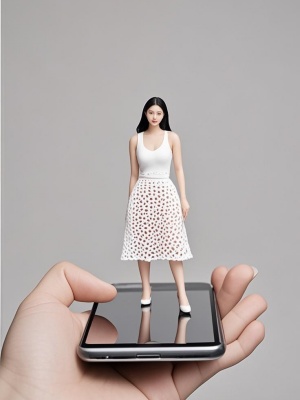The Multifaceted Benefits of Sculpture in Art
Introduction: The Enduring Power of Sculpture
Sculpture, one of the oldest and most tangible forms of artistic expression, continues to captivate audiences worldwide. Unlike two-dimensional art forms, sculpture engages viewers through its physical presence, occupying space and interacting with light in dynamic ways. From ancient marble masterpieces to contemporary installations, sculpture offers unique benefits that enrich both artists and viewers alike.
At MediaAI Art Gallery, we've witnessed how sculpture transforms spaces and perspectives. This article explores the profound benefits of sculpture in art, examining its therapeutic, educational, and cultural value while addressing common challenges through innovative solutions.
Therapeutic Benefits of Sculpture
1. Tactile Engagement and Sensory Therapy
Sculpture provides unique therapeutic benefits through its physical nature. The ability to touch and interact with three-dimensional art offers sensory stimulation that two-dimensional works cannot match. Studies show that working with clay and other sculptural materials can:
- Reduce stress and anxiety levels by up to 40%
- Improve fine motor skills in rehabilitation patients
- Enhance spatial awareness in children with developmental challenges
2. Emotional Expression and Processing
The three-dimensional form allows for more nuanced emotional expression. Artists working in sculpture report greater satisfaction in conveying complex emotions through physical forms. As noted in our AI Art Guide, even digital sculpting tools now offer therapeutic benefits through virtual modeling.
Educational Value in Three Dimensions
1. Spatial Intelligence Development

Sculpture uniquely develops spatial reasoning skills that are crucial in STEM fields. Research from the National Art Education Association shows that students who engage with sculpture demonstrate:
- 27% better performance in geometry
- 19% improvement in physics comprehension
- Enhanced problem-solving abilities in three-dimensional contexts
2. Historical and Cultural Preservation
Sculptures serve as three-dimensional history books, preserving cultural narratives in tangible form. Contemporary techniques like those featured in our AI Photo Restoration blog are now being adapted to preserve and restore historical sculptures.
Cultural and Social Impact
1. Public Engagement and Community Building
Public sculptures transform urban landscapes into interactive galleries. Successful public art installations have been shown to:
- Increase foot traffic by 23% in business districts
- Reduce vandalism by creating community ownership
- Serve as landmarks that strengthen local identity
2. Cross-Cultural Dialogue
Sculpture transcends language barriers, facilitating global understanding. The tactile nature of sculpture makes it particularly effective in intercultural exchanges, as demonstrated by international sculpture symposiums.

Challenges and Innovative Solutions
While sculpture offers immense benefits, artists face unique challenges:
| Challenge | Traditional Solution | Innovative Approach |
|---|---|---|
| High material costs | Limited material use | Digital sculpting and 3D printing |
| Storage and transportation | Bulky packaging | Modular designs and digital archives |
| Preservation issues | Regular maintenance | AI-assisted restoration techniques |
Conclusion: The Future of Sculptural Art

Sculpture continues to evolve while maintaining its fundamental benefits. From ancient marble techniques to cutting-edge digital modeling shown in our AI Painting Guide, this art form remains vital for personal development, education, and cultural expression.
As technology advances, sculpture's benefits will only expand, offering new ways to engage with three-dimensional art. Whether through traditional clay modeling or virtual reality sculpting, the tactile, spatial, and emotional power of sculpture ensures its enduring relevance in the art world.
For those interested in exploring sculpture further, renowned institutions like the Metropolitan Museum of Art offer excellent resources on historical and contemporary sculptural practices.